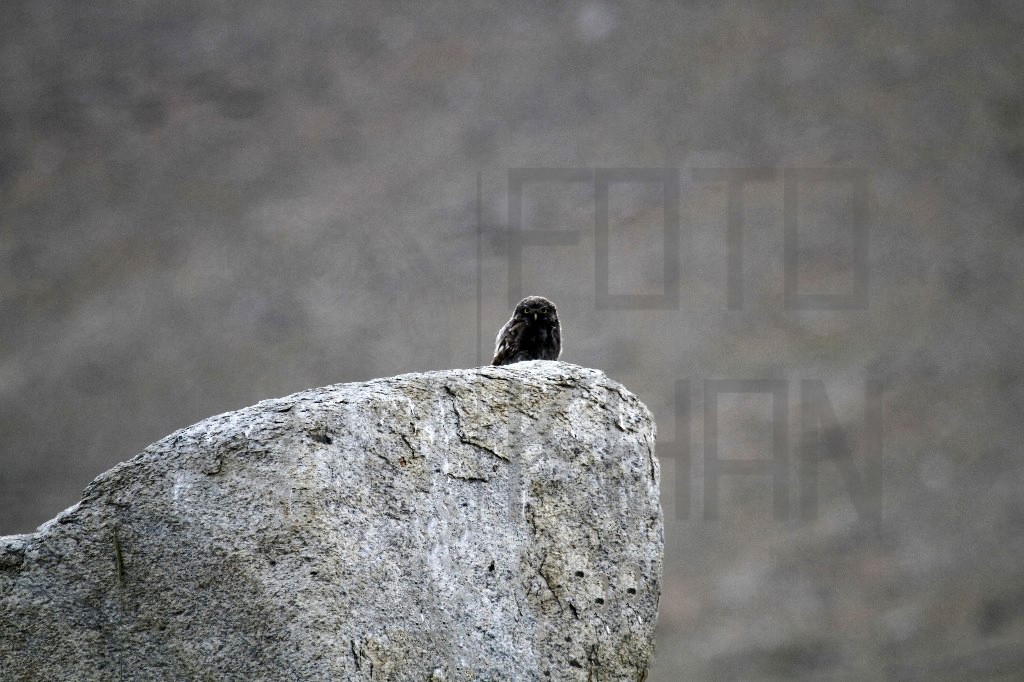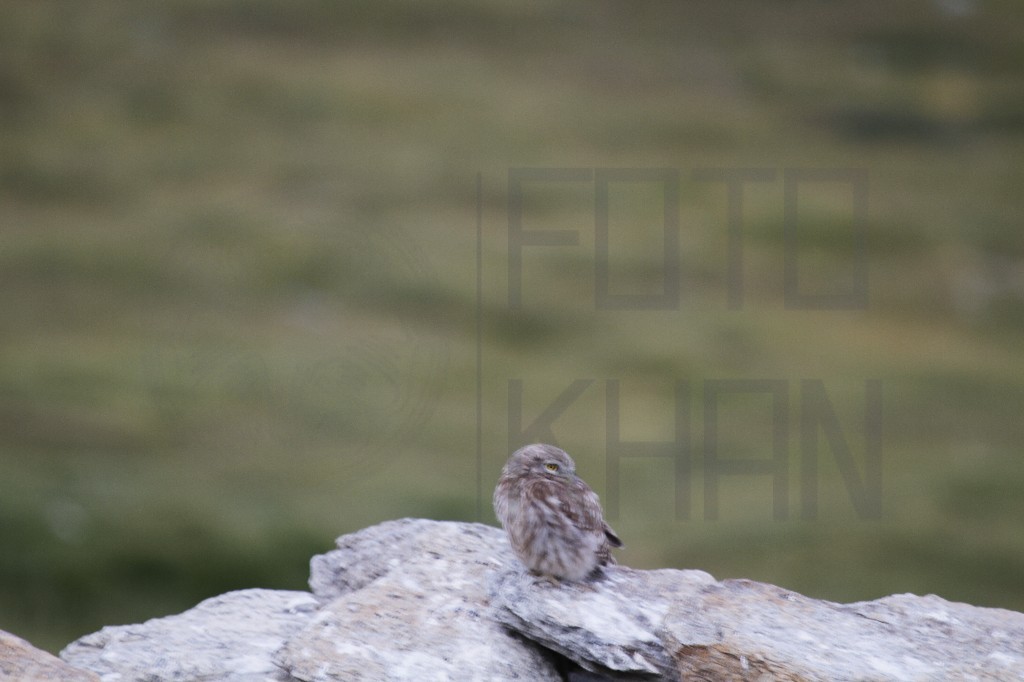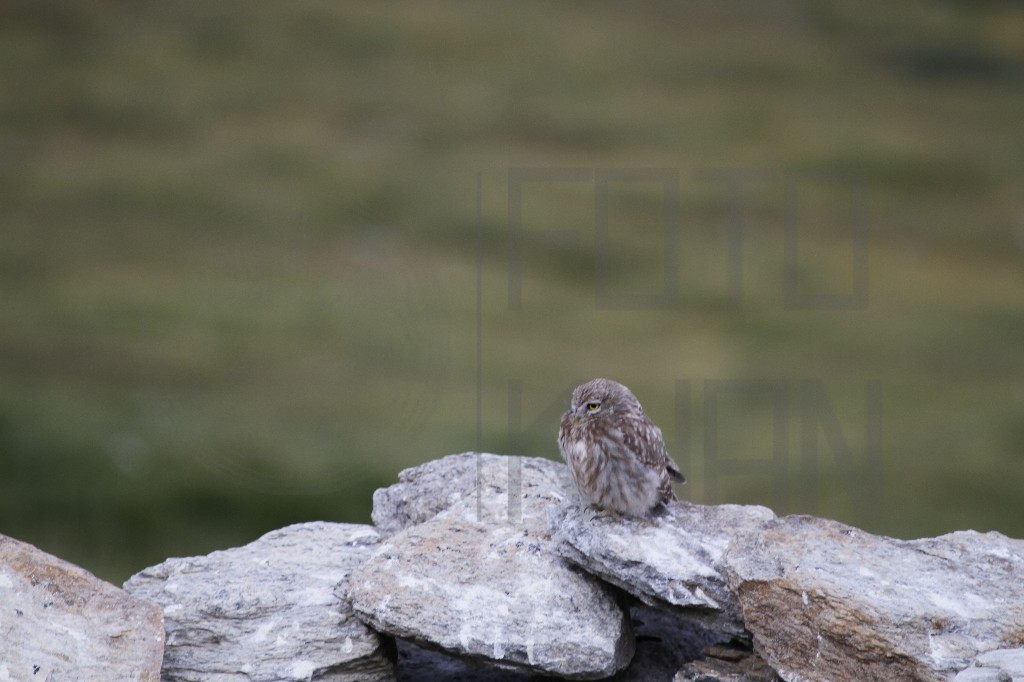The Little Owl (Athene noctua): A Delightful Resident of Ladakh’s High Altitude Habitats
The Little Owl, scientifically known as Athene noctua, is a captivating and charming bird species found in the high-altitude regions of Ladakh, India. Known locally as “Ugpa” or “Uk-pa,” this small owl species is a delight for both bird enthusiasts and casual observers. With its distinctive appearance, interesting behaviors, and a unique breeding season, the Little Owl has carved out a special place in the hearts of those who have encountered it in the serene landscapes of Hanley, Chushul, Tsokar, and Nubra Valley.
Taxonomy and Appearance
The Little Owl, belonging to the family Strigidae, stands out with its petite stature, measuring around 21 to 23 centimeters in length. This owl species showcases a round head and large, bright yellow eyes that convey a sense of wisdom. The plumage of the Little Owl is predominantly mottled brown and gray, featuring distinct streaks and spots. Its size and coloration make it easily distinguishable from other owls and birds in the region.
Breeding Season
The breeding season of the Little Owl typically spans from April to July, aligning with the warmer months of the year in Ladakh. During this period, these owls become increasingly active, as they prepare to raise their offspring. Nesting primarily occurs in natural cavities, rock crevices, or even abandoned burrows. The Little Owl is known for its dedication to its young, with both parents sharing the responsibilities of incubating the eggs and caring for the hatchlings.



Habitat and Range
The Little Owl is well-suited to the rugged landscapes of Ladakh, where it can be found in various high-altitude areas, including Hanley, Chushul, Tsokar, and Nubra Valley. These regions offer an array of potential nesting sites and an ample supply of the owl’s favored prey. The Little Owl’s adaptability to these diverse landscapes is remarkable, making it a versatile resident in the region.
Feeding Behavior
As primarily nocturnal birds, Little Owls are skilled hunters in low-light conditions. Their diet primarily consists of small mammals, insects, and sometimes small birds. They are also known to feed on scorpions and other invertebrates, making them important contributors to the local ecosystem’s balance.
Little Owls are known for their characteristic hunting technique. They often perch on a vantage point, such as a rock or a low branch, scanning the ground for potential prey. Once a suitable target is spotted, they swoop down with precision and catch it with their sharp talons. This behavior is not only fascinating to observe but also essential for the owl’s survival in the harsh Ladakhi environment.
Cultural Significance
In Ladakh, the Little Owl holds a special place in local folklore and traditions. The owl’s hooting is often associated with the impending change of weather or other significant events. Locals consider the owl as a harbinger of news, whether it be good or bad. This cultural significance adds to the owl’s mystique, making it a respected and revered bird in the region.
Conservation Efforts
Despite its adaptability and cultural significance, the Little Owl faces certain conservation challenges in Ladakh. Changes in land use, habitat degradation, and potential disturbance from human activities pose threats to their populations. Efforts to conserve this charming owl species include raising awareness, promoting responsible tourism, and monitoring their populations and habitats.
In conclusion, the Little Owl, scientifically known as Athene noctua, is a delightful and captivating resident of Ladakh’s high-altitude habitats. With its petite stature, mottled plumage, and distinctive hooting, it has made a lasting impression on those who have had the privilege of encountering it in regions like Hanley, Chushul, Tsokar, and Nubra Valley. While facing conservation challenges, the Little Owl remains an integral part of Ladakh’s rich cultural and ecological tapestry, making it a treasured symbol of the region’s unique biodiversity. Efforts to protect and conserve this charming owl species are crucial to ensure its continued presence in Ladakh’s enchanting landscapes.
